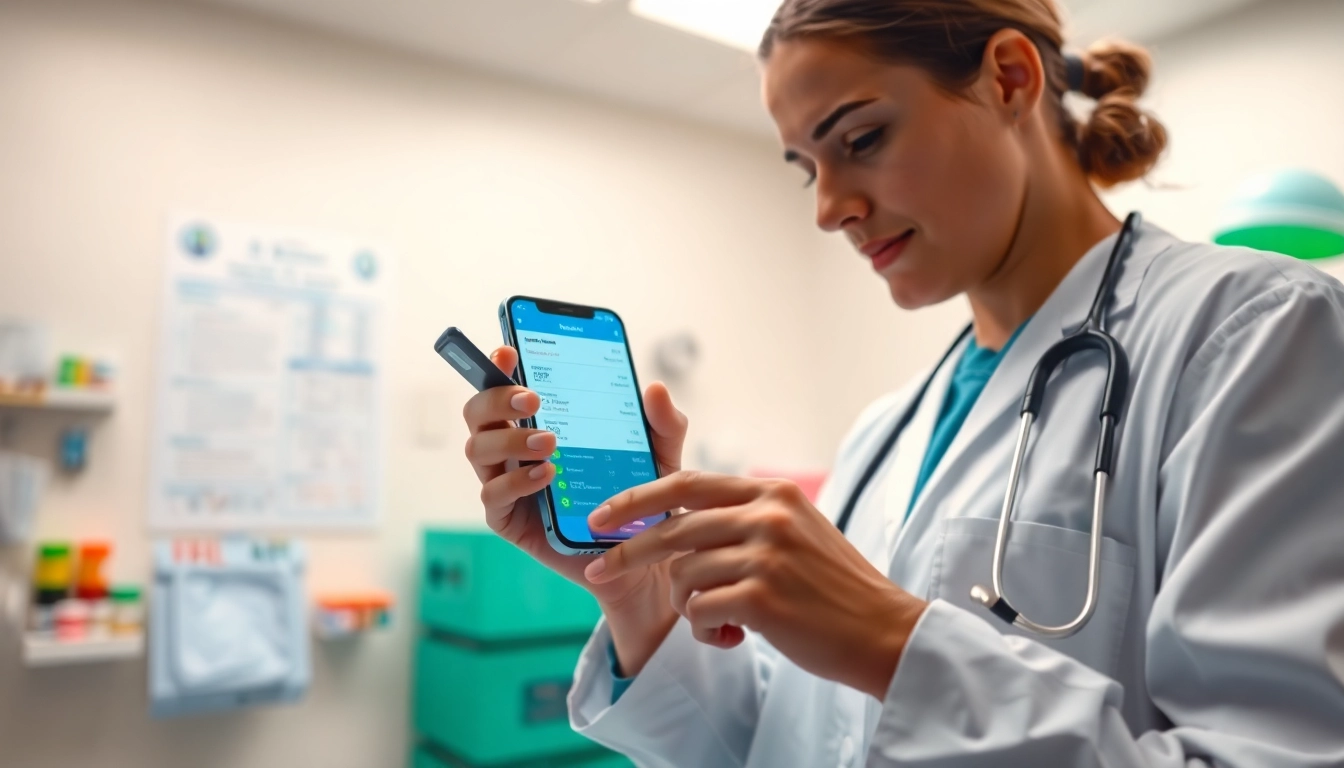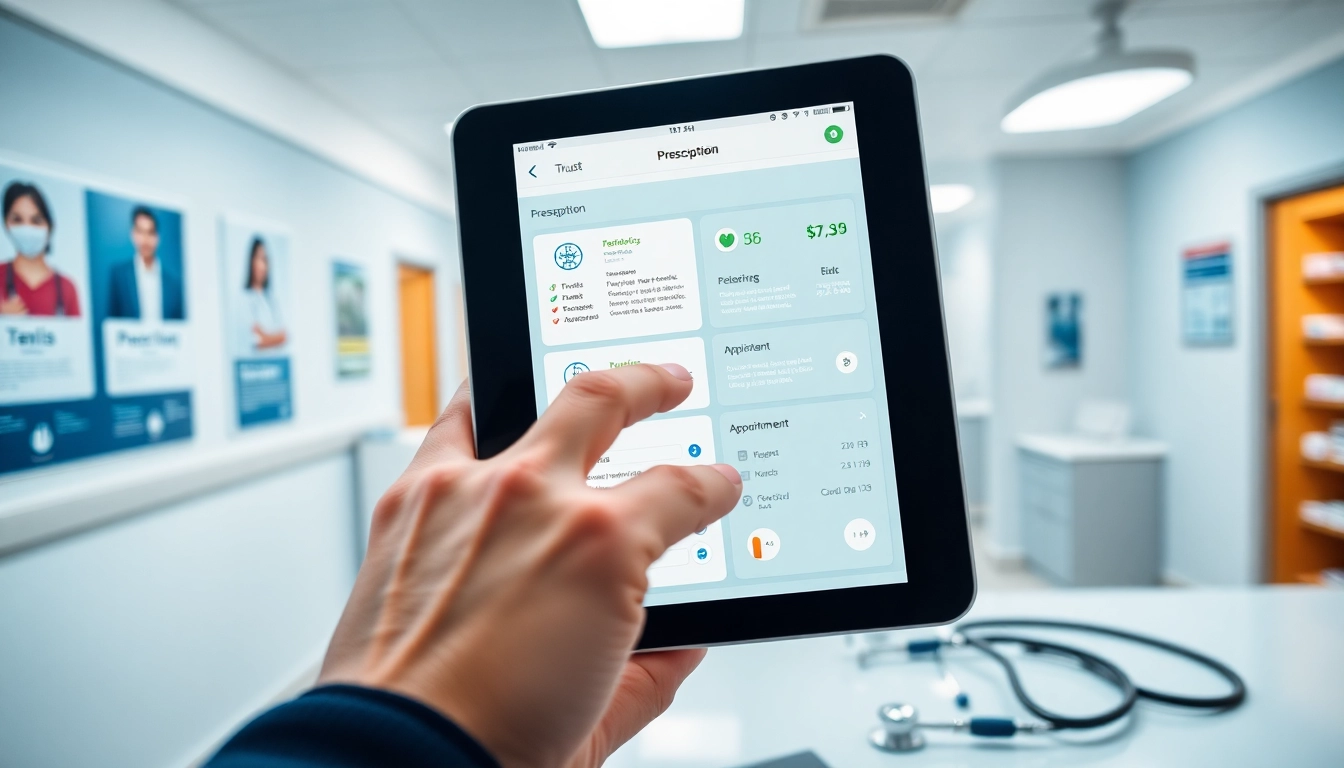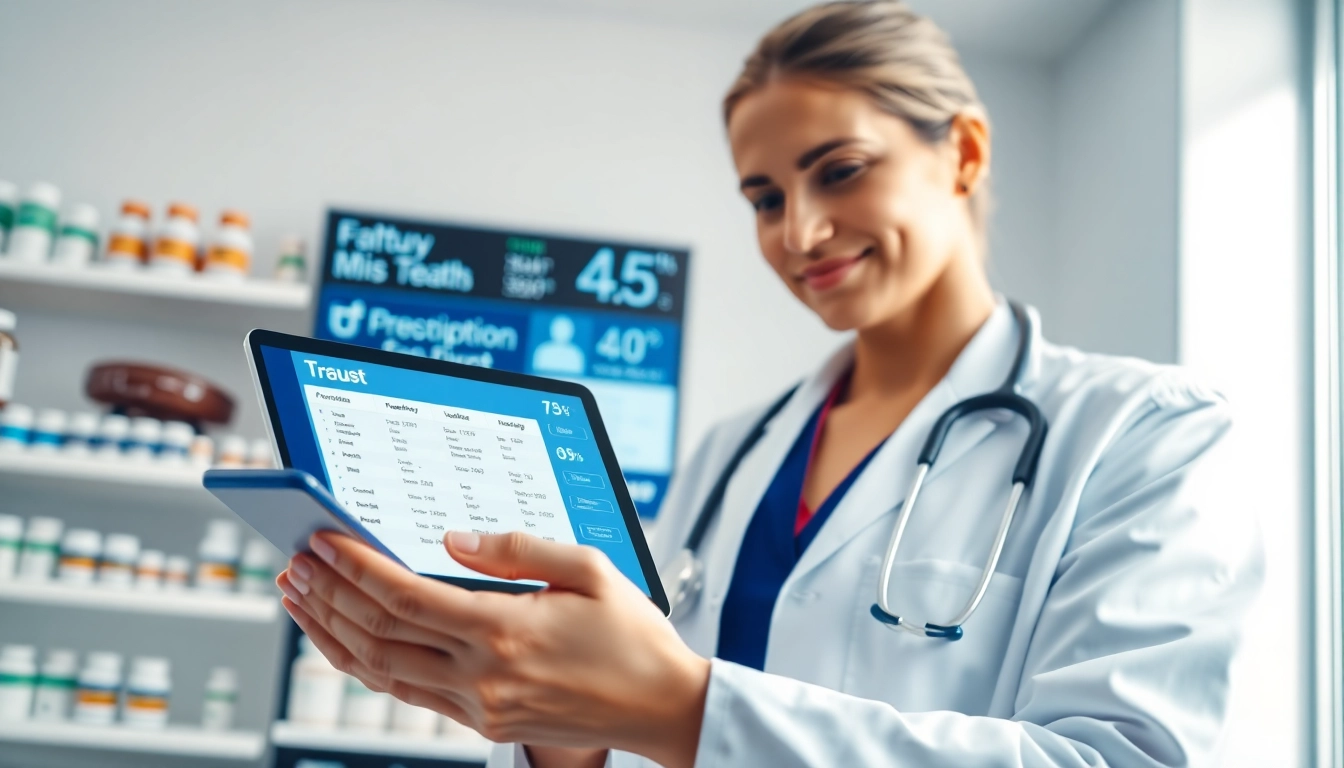Understanding E-Prescription Apps
What are E-Prescription Apps?
E-prescription apps are digital tools designed to streamline the prescription process within healthcare. These applications enable healthcare providers to create and send prescriptions electronically to pharmacies, reducing the reliance on traditional paper prescriptions. The embrace of technology in healthcare has led to significant improvements in the efficiency of prescription management, making e-prescribing a standard practice in modern medicine. E-prescription apps not only minimize paperwork but also allow for real-time monitoring and management of patients’ medication regimens.
How E-Prescription Apps Work
The functionality of e-prescription apps is multifaceted. After a healthcare provider evaluates a patient and determines the need for medication, they input the prescription information into the app. The e-prescription app then securely transmits this information to the patient’s chosen pharmacy. Pharmacies receive prescriptions electronically, which allows them to process medications rapidly, decreasing wait times for patients. Furthermore, these apps often include integrated features for medication history checks, drug interaction alerts, and instant communications with pharmacies, all while ensuring patient confidentiality and security.
Major Features of E-Prescription Apps
- Secure Transmission: E-prescription apps ensure that all prescription information is transmitted securely, safeguarding patient data.
- Medication History Access: Providers can easily access a patient’s medication history to help prevent errors and duplicate therapies.
- Real-Time Updates: Pharmacies receive prescriptions in real-time, thus eliminating delays associated with faxed or handwritten prescriptions.
- Interoperability: Many e-prescribing systems integrate with Electronic Health Records (EHRs), allowing for seamless data sharing across different platforms.
- User-Friendly Interfaces: Most e-prescription apps are designed with ease of use in mind to enhance the user experience for both providers and patients.
Advantages of Using E-Prescription Apps
Enhancing Medication Adherence
One of the primary advantages of using eprescription apps is their ability to enhance medication adherence among patients. These apps often provide reminders and notifications regarding when to take medication, which can significantly improve compliance rates. For instance, studies have indicated that patients utilizing reminder features within their e-prescription apps were more likely to follow their prescribed treatment plans. This proactive approach diminishes the likelihood of missed doses, consequently improving health outcomes.
Improving Patient Communication
E-prescription apps facilitate better communication between healthcare providers and patients. With integrated messaging systems, patients can ask questions, clarify concerns, and receive guidance on their prescriptions directly through the app. This passive yet effective communication channel allows for not only immediate answers to patients’ questions but also improvements in overall satisfaction with the healthcare experience. Enhanced communication contributes to a more informed patient, which is vital in promoting adherence to treatment protocols.
Streamlining Workflow for Healthcare Providers
Healthcare providers benefit greatly from the efficiencies brought about by e-prescription apps. By streamlining the prescription process, providers can free up time that would otherwise be spent on paperwork or administrative tasks. This enables them to focus more on patient care rather than managing prescriptions. The automation in prescription management allows providers to handle more patients efficiently within a workday, ultimately leading to improved productivity and job satisfaction among healthcare professionals.
Impact on Patient Safety
Reducing Prescription Errors
Reducing prescription errors is a critical advantage of using e-prescription apps. Traditional handwritten prescriptions are often prone to misinterpretation due to illegible handwriting or unclear instructions. E-prescribing eliminates this issue by providing clear, standardized formats. Additionally, the electronic nature ensures that the prescribed medication is sent directly to the pharmacy, reducing the chances of errors occurring during the transcription process. Studies have shown that institutions using e-prescribing systems experience significantly lower rates of prescription-related errors.
Access to Patient Medication History
Access to a comprehensive view of a patient’s medication history is another significant benefit of e-prescription apps. These systems allow healthcare professionals to review patients’ previous medications, including dosages and treatment durations, which is invaluable when making prescribing decisions. By being aware of a patient’s full medication profile, providers can avoid potential adverse drug interactions and prescribe more effectively based on the patient’s history.
Support for Drug Interaction Checks
E-prescription apps incorporate features that actively alert providers regarding potential drug interactions before a prescription is finalized. This is a crucial aspect of patient safety, as certain medications can have harmful effects when combined. By utilizing built-in databases that flag these interactions, healthcare professionals are better equipped to make informed decisions, avoiding harm and enhancing patient care.
Efficiency and Cost Savings
Time Reduction in Prescription Processing
Time efficiency is a fundamental benefit associated with e-prescription apps, significantly reducing the time required to process prescriptions. The immediate transmission of prescriptions to pharmacies allows for quicker fulfillment. Patients no longer have to wait for prescriptions to be printed or faxed, which translates to shorter wait times in both the doctor’s office and the pharmacy. Consequently, providers can see more patients in less time, optimizing their workflows.
Lower Operational Costs for Pharmacies
Pharmacies also stand to gain from using e-prescription apps, as they can minimize operational costs associated with managing paper prescriptions. With reduced clerical errors and less need for physical storage space for documentation, pharmacies can allocate resources more effectively. Furthermore, e-prescribing reduces the administrative burden on pharmacy staff, enabling them to invest more time in providing customer service and counseling to patients.
Decreasing Visit Frequencies and Related Costs
By employing e-prescription apps, healthcare providers can help reduce the frequency of patient visits necessary for medication refills and management. Patients can easily request refills through their apps or directly from their pharmacies without needing to return to their healthcare provider’s office. This not only decreases the associated costs, such as travel and insurance copays, but also allows patients to manage their healthcare more effectively from the comfort of their homes.
Future Trends in E-Prescription Technology
Integration with Health Wearables
The future of e-prescription technology is likely to see increased integration with health wearables. Devices that monitor health metrics such as blood pressure, glucose levels, and heart rate can transmit data to e-prescribing systems in real-time. This data can inform prescribing decisions by helping healthcare providers understand how a patient is responding to medications. For example, smart devices could alert providers if a patient’s health is deteriorating, prompting an immediate reevaluation of their medication regimen.
Artificial Intelligence in E-Prescribing
Artificial Intelligence (AI) is poised to revolutionize how e-prescribing is conducted. Future e-prescription apps may utilize AI algorithms to analyze patient data and provide personalized prescription recommendations, enhancing the precision of medication management. AI could also automate various processes such as follow-up reminders and refill requests, creating a seamless experience for patients and providers alike, while also optimizing adherence rates.
Potential for Patient-Centric Innovations
As the healthcare industry shifts towards patient-centric models, e-prescription apps will likely evolve to offer even more personalized services. Features that allow patients to manage their health records, track their medication history, and even connect with their healthcare providers could become standard. Innovations that promote greater patient involvement in their own healthcare decisions and education regarding medication can lead to improved outcomes and satisfaction.




